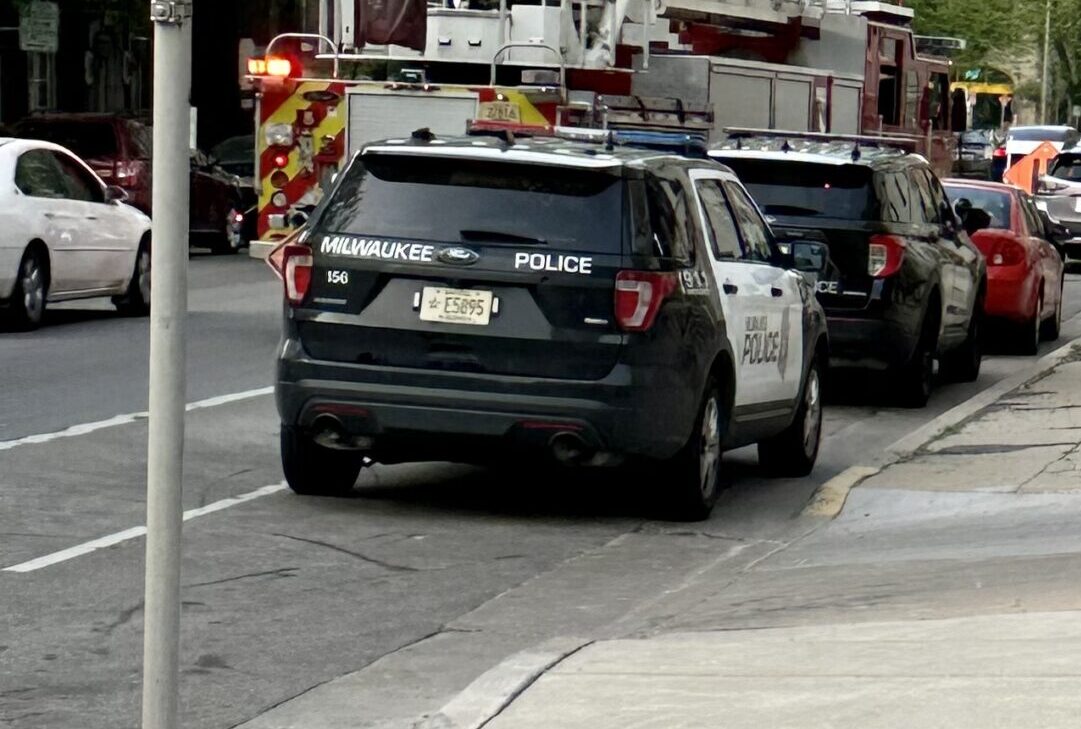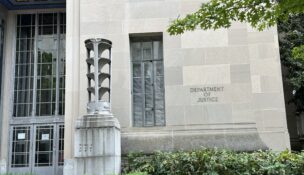Justice Crooks: A year without dissent
By: dmc-admin//August 25, 2008//
 For the first time since the Wisconsin Law Journal began tracking how often our Supreme Court justices fall in the majority and dissent (and probably for much, much longer than that), a justice has gone an entire term without dissenting even once.
For the first time since the Wisconsin Law Journal began tracking how often our Supreme Court justices fall in the majority and dissent (and probably for much, much longer than that), a justice has gone an entire term without dissenting even once.
That justice is the court’s ultimate swing vote: Justice N. Patrick Crooks.
In the 65 cases he participated in that resulted in a full opinion, Crooks voted in the majority every time.
When told of the feat, Justice Crooks said, “Until you said that, I didn’t even realize it, but that’s right.” Crooks added that, not only did he not dissent at all this term, but he only wrote one separate concurring opinion (DOR v. Menasha Corp., 2008 WI 88).
In recent years, Crooks has been the justice most likely to be in the majority. In the three previous court terms, he dissented only nine times. But not to dissent at all is a feat that has not been achieved since we began collecting this data after the 2000-01 term.
The past term was also remarkable for how similar the rest of the justices are, in terms of how frequently they dissent. Chief Justice Shirley S. Abrahamson and Justice Ann Walsh Bradley were both in the majority in 87 percent of cases, followed by Justices David T. Prosser Jr. and Annette Kingsland Ziegler, at 84 percent; Justice Louis B. Butler Jr. at 83; and Justice Patience Drake Roggensack at 82.
Other than Crooks, no justice dissented less than 8 times, nor more than 12.
In contrast, in the 2006-07 term, Abrahamson dissented 20 times, and was in the majority only 69 percent of the time.
The enormous influence of Crooks on the court is perhaps even more forcefully demonstrated by examining those cases which result in a four-three split among the justices.
There were 14 such cases in the term. In seven of these, the justices comprising the majority were Crooks, joined by Abrahamson, Bradley and Butler; in the other seven, the justices were Crooks, joined by Prosser, Roggensack and Ziegler.
Eight of those 14 cases involved tort or insurance issues. The former group of justices were in the majority in four; and the latter group were the majority in the other four.
Since we began examining the data, there has not been a year in which justices lined up this way in every single four-three case.
Polarization?
This data could be construed as showing a new and greater degree of polarization on the court. However, other data suggest otherwise.
The court decided 22 criminal cases during the term; 18 were decided unanimously, or 82 percent of cases.
In contrast, during the 2006-07 term, only 8 of 19 criminal cases, 42 percent, were unanimous, a figure roughly consistent with other terms this decade. The 82 percent unanimity is a significant change from the norm.
Tort and insurance cases were more in line with previous years, with only half, nine of 18, resulting in unanimous decisions.
Counting all cases for the term, 41 of 66, or 62 percent were unanimous. This is nearly double the 2005-06 term, when only 37 percent of cases produced unanimous opinions.
So the question of polarization on the court is a mixed one. Looking solely at the cases that produced a four-three split, and how the justices aligned with one another in those cases, it appears to be a deeply divided court, with one swing justice acting as the decisionmaker.
But the jump in the number of cases which produced no dissents at all, not just from last term, but all terms this decade, suggests otherwise.
Attorney Richard M. Esenberg, who teaches a course at Marquette University Law School on the Wisconsin Supreme Court, sees increased polarization on the court.
“We still continue to have a sharply divided court occasionally, with some degree of sharp language.”
Esenberg specifically noted the court’s opinions in Helgeland v. Wisconsin Municipalities, 2008 WI 9, 307 Wis.2d 1, 745 N.W.2d 1, in which the majority accused the dissent of inappropriately raising “wedge issues” into the analysis.
Esenberg said, “Helgeland was a civil procedure case involving intervention. Yet, it was a four-to-three decision, with the typical breakdown, and very sharp language between the majority and the dissent.”
Alignment
The two justices most likely to concur were Abrahamson and Bradley, concurring in 98 percent of opinions. In only one case all term, a criminal case, did one dissent, but not the other.
Justices Roggensack and Ziegler were second most likely to concur, at 97 percent (in only two cases were the two on separate sides). The respective combinations of Bradley and Butler, and Prosser and Roggensack, each concurred in 95 percent of cases.
Least likely to concur were Prosser and Butler, at 65 percent, followed by Butler and Ziegler, at 66 percent.
These figures suggest less division on the court. In the 2006-07 term, Abrahamson and Prosser concurred in only 42 percent of cases.
However, as noted above, 62 percent of cases this term were unanimous. Thus, of all those cases that were not, Butler and Prosser concurred in only three cases.
Torts and Insurance
Obviously, Justice Crooks was most likely in the majority in torts and insurance cases, at 100 percent.
The rest of the justices were all nearly as likely as any other to be in the majority, ranging from 72 to 78 percent.
There were three combinations of justices who concurred with each other in 100 percent of tort and insurance cases: Abrahamson and Bradley; Ziegler and Prosser; and Ziegler and Roggensack.
Four different combinations were least likely to concur, at only 47 percent: Butler and Prosser; Ziegler and Abrahamson; Ziegler and Bradley; and Ziegler and Butler.
Remarkably, these figures are lower than the percentage of tort and insurance cases which were unanimous — 50 percent (recusals by either Ziegler or Prosser in some unanimous cases account for this seeming impossibility).
Criminal Law
In criminal law cases, Crooks was not the only justice never to dissent. Prosser was in the majority in 100 percent of the cases as well.
After that came Roggensack and Ziegler, both in the majority in 95 percent of cases, followed by Abrahamson and Butler, both at 91 percent; and Bradley, at 86 percent.
These high percentages across the board are noteworthy, as well. In the 2006-07 term, Abrahamson dissented most often, and was in the majority in only 63 percent of cases.
With Crooks and Prosser both in the majority in 100 percent of criminal cases, they obviously concurred in 100 percent of cases, as well.
Similarly, Roggensack and Ziegler also concurred in 100 percent of these cases.
The justices concurring least frequently in criminal cases were Bradley and Roggensack, and Bradley and Ziegler, at 82 percent.
As would be expected with the jump in unanimous criminal opinions, even the lowest concurrence rate is much higher than the lowest ones in 2006-07.
In that term, Abrahamson
and Wilcox, and Abrahamson and Roggensack, each concurred in only 47 percent of criminal cases.
In the light of the high degree of unanimity in criminal cases, Tracey Wood, an attorney with Van Wagner & Wood, and president of the Wisconsin Association of Criminal Defense Lawyers (WACDL), said that it is getting tougher on the criminal defense side to be successful on appeal.
However, she said, “WACDL is hopeful that our current Supreme Court can stay immune from influence by special interest groups.”

Legal News
- Waukesha man sentenced to 30 years for Sex Trafficking
- 12-year-old shot in Milwaukee Wednesday with ‘serious injuries’
- Giuliani, Meadows among 18 indicted in Arizona fake electors case
- Some State Bar diversity participants walk away from program
- Wisconsin court issues arrest warrant ‘in error’ for Minocqua Brewing owner
- Iranian nationals charged cyber campaign targeting U.S. Companies
- Facing mostly white juries, are Milwaukee County defendants of color truly judged by their peers?
- Milwaukee Mayor speaks in D.C. Tuesday at White House water summit
- Chicago man sentenced to prison after being caught with ‘Trump Gun’
- FTC bans non-competes
- Gov. Evers seeks applicants for Dane County Circuit Court
- Milwaukee man charged in dismemberment death pleads not guilty
WLJ People
- Power 30 Personal Injury Attorneys – Russell Nicolet
- Power 30 Personal Injury Attorneys – Benjamin Nicolet
- Power 30 Personal Injury Attorneys – Dustin T. Woehl
- Power 30 Personal Injury Attorneys – Katherine Metzger
- Power 30 Personal Injury Attorneys – Joseph Ryan
- Power 30 Personal Injury Attorneys – James M. Ryan
- Power 30 Personal Injury Attorneys – Dana Wachs
- Power 30 Personal Injury Attorneys – Mark L. Thomsen
- Power 30 Personal Injury Attorneys – Matthew Lein
- Power 30 Personal Injury Attorneys – Jeffrey A. Pitman
- Power 30 Personal Injury Attorneys – William Pemberton
- Power 30 Personal Injury Attorneys – Howard S. Sicula











